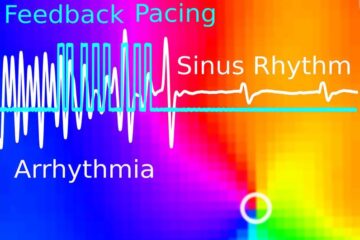DNA-repair protein functions differently in different organisms

Researchers hope to someday develop an enzyme to repair UV-damaged DNA in humans
Plants, pond scum, and even organisms that live where the sun doesn’t shine have something that humans do not — an enzyme that repairs DNA damaged by ultraviolet (UV) light.
Cabell Jonas of Richmond, Va., an undergraduate honors student in biology at Virginia Tech, will report on the molecular details of the DNA-repair enzyme at the 225th national meeting of the American Chemical Society March 23-27 in New Orleans. Her poster includes the novel discovery that the enzyme does not operate the same way in different organisms.
UV light is one of the most prevalent causes of DNA damage. In humans, incidents of resulting disease — in particular, skin cancer, are increasing as exposure to UV increases, says Sunyoung Kim, assistant professor of biochemistry at Virginia Tech. Since the human body does not have DNA photolyase, Kim and her students are studying the DNA-repair enzyme in other systems. “Our aim is to map the molecular interactions and understand the structural changes, with the eventual goal of being able to create or adapt this flavoenzyme from another organism for treatment of skin cancer in humans,” says Kim.
She explains that there are two different kinds of DNA repair. One is base incision repair — the cell machinery gears up, cuts out the damaged section of DNA, and rebuilds it. The second uses DNA photolyase. “A Lone Ranger enzyme repairs the damage without all the machinery or a lot of team players.”
In two steps — photoactivation and photo repair — the flavoenzyme actually uses light to repair UV damage — but from a different, visible part of the spectrum. During activation, a flavin adenine dinucleotide (FAD) molecule triggers a transfer of electrons from the flavin portion of the enzyme to the damaged DNA to carry out repair.
“We’ve discovered that, depending on which organism the enzyme comes from, the transfer of electrons through the protein is a little different,” says Kim. “That is novel because it is generally assumed — and is a basis for bioinformatics, for instance — that the same protein doing the same job, even in different organisms, performs in the same way. But we are finding that this job of DNA repair is done by slightly different proteins in our two model organisms — e. coli and cyanobacterium (once known as blue-green algae) — and that the electrons take different paths to perform the repair.”
The poster, “Examination of photoactivation in DNA photolyase using difference infrared spectroscopy (CHED 893),” by Jonas, graduate student Lori A. McKee of Butte, Montana, and Kim, will be presented on Monday, March 24, from 2 to 4 p.m. in Convention Center Hall J. Now a senior, Jonas has carried out research in Dr. Kim’s lab since Jonas was a sophomore. McKee received her undergraduate chemistry degree at Montana Tech.
Contact Dr. Kim at sukim1@vt.edu or (540)231-8636 or Cabell Jonas at mjonas@vt.edu(540)231-7091.
PR Contact: Susan Trulove, 540-231-5646, strulove@vt.edu
Media Contact
More Information:
http://www.technews.vt.edu/All latest news from the category: Life Sciences and Chemistry
Articles and reports from the Life Sciences and chemistry area deal with applied and basic research into modern biology, chemistry and human medicine.
Valuable information can be found on a range of life sciences fields including bacteriology, biochemistry, bionics, bioinformatics, biophysics, biotechnology, genetics, geobotany, human biology, marine biology, microbiology, molecular biology, cellular biology, zoology, bioinorganic chemistry, microchemistry and environmental chemistry.
Newest articles

Wildfire danger to increase due to climate change
WSL Institute for Snow and Avalanche Research (SLF) researchers expect an elevated wildfire danger in the Alpine Foreland from 2040 onwards due to changing meteorological conditions. The danger currently remains…

Advanced Brain Science Without Coding Expertise
Researchers at Helmholtz Munich and the LMU University Hospital Munich introduce DELiVR, offering a new AI-based approach to the complex task of brain cell mapping. The deep learning tool democratizes…

Gentle defibrillation for the heart
Using light pulses as a model for electrical defibrillation, Göttingen scientists developed a method to assess and modulate the heart function. The research team from the Max Planck Institute for…





















